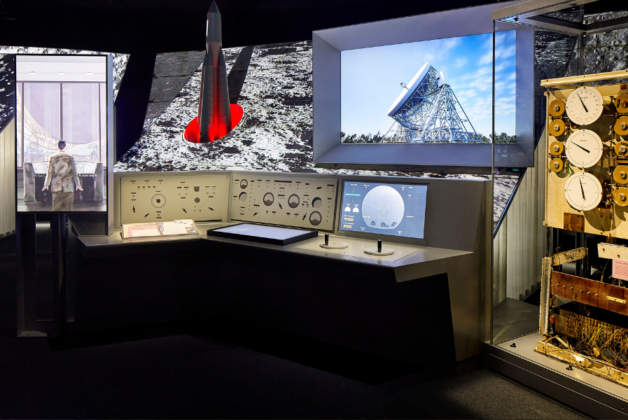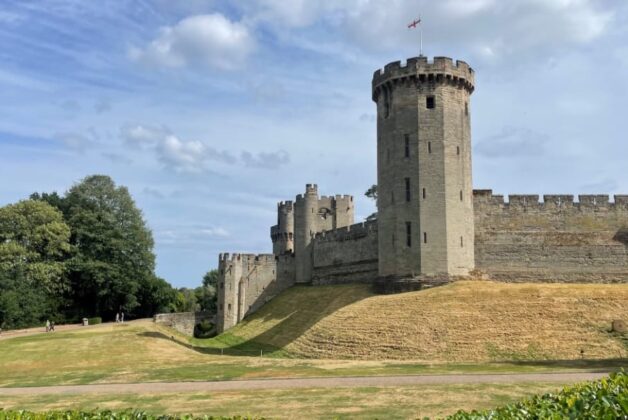Image: © Boegly + Grazia for Casson Mann (architecture h2o architectes et Snøhetta)
Casson Mann explains its approach to creating accessible and immersive museum experiences at Musée national de la Marine in Paris.
‘Designing accessible museums is about more than just making exhibits available’ claims Delphine Rabat, Head of Casson Mann France. ‘It’s about creating equally rich experiences for every visitor’. The leading exhibition design firm’s most recent French project, Musée national de la Marine in Paris has just won the prestigious International Council of Museum’s (ICOM) CECA Best Practice award for its accessibility approach. The museum’s Head of Interpretation, Lucie Aertz, was commended for her work in pioneering this ambitious accessibility strategy. Casson Mann responded boldly to the museum’s vision: the significant redesign lets all visitors experience the extraordinary collection in a new, powerfully affecting way.
The Musée national de la Marine tells stories of the navy, the sea and the people connected to it. The collection developed from a group of ship models given to King Louis XV in 1748, and now boasts a spectacular range of objects, from the golden stern decoration of Louis XIV’s galley and Vernet’s sea port paintings to contemporary navigation tools. Housed within the Palais de Chaillot at Place du Trocadéro, the museum sits in the heart of Paris. The brief for Casson Mann was to bring these maritime objects and stories to wider audiences. In response, Casson Mann’s design proposal was ‘to bring the drama of the sea to Paris’. Visitors would not only admire the artistry of ship models and maritime paintings but feel awestruck by a huge fleet of vessels or thrilled by the crashing of the waves. And crucially, the museum and Casson Mann wanted everyone to access this experience.
Casson Mann took the opportunity to think inventively about accessibility. Guided by specialist consultant Polymorphe Design, access was considered an integral part of the design approach from the start. The designers wanted to go further than merely attaching accessible elements to a primarily visual exhibition. By disrupting this traditional ‘sense hierarchy’ they sought to bring about emotional responses through various means. In fact, they were confident this different sensory logic would enrich the experience for everyone.
The new sensory rationale shaped one of the key design moves – the idea of creating a series of sculptural ‘landmarks’ that punctuate the visitor route and immerse visitors in compelling stories of life at sea. From a ship’s hull and a cluster of shipping containers, to a giant wave, each landmark was envisaged as a key moment of drama and interest, so it was important that all visitors could experience them. Casson Mann conceived of a series of immersive installations which would engage a range of senses and offer various ‘routes in’ for visitors.

To successfully bring about this accessibility approach, thorough consultation was essential. People of all ages, interests and with varying sight, hearing and intellectual needs tested ongoing design ideas at workshops. This provided crucial insight into what worked and what didn’t. People were asked to think aloud while encountering these prototypes, giving the team close understanding of which practical details would enrich engagement. In this way, visitors were central to the design thinking.
After four years of renovation the museum reopened in November 2023. Visitors enter through the dramatic ship’s hull landmark, towering over them at seven metres high. Inside, they are immersed in the sheer vastness of the sea. Casson Mann collaborated with Clap 35 / Mac guff to develop the large hemispheric projection with an atmospheric soundscape of the lapping tide and ship horns. Vibrations incorporated into the seating serve to augment the audio-visual experience.
The Consumerism gallery is recognisable by its impressive installation of shipping containers, transporting visitors to the port of present day Le Havre. Inside one of the containers is the Fishmonger’s Stall, an interactive display which uses touch objects and audio-described digital interactive displays to explore the different choices consumers make when buying fish.

Further along the Ground Floor gallery, the giant wave landmark sweeps visitors into the drama of the sea. At 20 metres long and nearly eight metres high, visitors experience awe under its monumentality. With a deep rumbling soundscape which fills the atmosphere, a smell of oil evoking the impact of spillages, and nearby touch exhibits like the cast of a bell from a shipwrecked expedition, all visitors can share in the theatre of this space.

There are eight ‘essential’ mediation tables across the various galleries, incorporating objects to touch, screens with narrative audio descriptions, translation into FSL (French Sign Language) and FALC (Easy to Read and Understand) texts, and braille texts. Developed with Squint Opera, these interactive stations help visitors to connect personally with the objects or themes, which is crucial to creating memorable encounters.
The museum displays are flexible to facilitate ‘toned-down’ time slots during the week, when sound, visual media and lighting are reduced for visitors’ comfort. For example, the Wave projection is slowed down even further and the dynamic lighting is presented as fixed. This innovative proposal allows visitors who have a high sensitivity to feel comfortable during their visit.
Casson Mann worked closely with Praline, who developed graphics for the museum. These include freestanding graphic panels which introduce each room and theme, wall mounts which communicate wider context, and labels with information about the collection. The colour contrast, typography choice and text size aims to ensure that visitors can comfortably read at a reasonable distance.

Beyond the specific exhibition design approach, the museum placed a Snoezelen inspired room along the visitor route. This calm space, with soft fibre-optic lights and gentle activities, was designed particularly for people with autism spectrum disorders (ASD). The museum also offers visitors ‘the sailor’s bag’ designed for young children including eight activities through which the collection can be explored. Each activity engages only one sense at a time making this inclusive for children with ASD.
The result is a powerfully immersive museum which offers multiple ways for visitors to access the stories regardless of their age, physical, visual, hearing, or intellectual abilities. Casson Mann’s design goes beyond making objects physically available. It puts visitors at the centre and welcomes them to share in the great drama of the sea.





